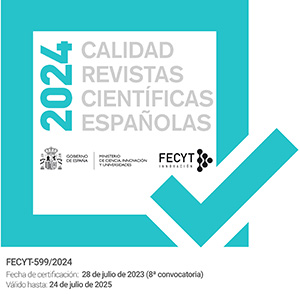Fronteras imaginadas y estereotipos : la creación de un monstruo llamado Europa del Este
DOI:
https://doi.org/10.5944/etfvi.2.2009.1465Palabras clave:
Europa del Este, estereotipos, República Checa, Europa Central, Eastern Europe, stereotypes, imaginary, Czech Republic, Prague, Budapest, Central Europe,Resumen
En este artículo se observa como se han formado en el «oeste», desde la Guerra Fría hasta hoy, algunos estereotipos negativos sobre la marca «Europa del Este», la cual está cargada de connotaciones negativas (ciudades grises, guerras, inmigración ilegal, pobreza o criminalidad). Al mismo tiempo, como si de un oasis se tratara, se observa parojicamente como la marca Praga o Budapest (capitales de países de «Europa del Este») no son percibidas negativamente, precisamente porque no están relacionadas directamente con el Este, sino con centroeuropa y con imágenes positivas asociadas a la herencia artístico-cultural de los imperios centrales: el sacro imperio germano-romano y el austrohúngaro.
In this article it is observed how from the Cold War till today have been formed in the West significant stereotypes towards Eastern Europe, which are endowed with negative images, such as grey towns, illegal immigration, wars, poverty or criminality. At the same time it is observed, paradoxically, how the brand Prague or Budapest (capitals of «Eastern European» countries) are not perceived negatively, precisely because they are not directly associated with the East, but with the cultural heritage form the old central empires: the Sacred Roman-German empire first, and the Habsburg empire later.
Descargas
Descargas
Publicado
Cómo citar
Número
Sección
Licencia
Los autores que publican en esta revista están de acuerdo con los siguientes términos:
- Los autores conservan los derechos de autor (copyright) de las obras publicadas y garantizan a la revista el derecho de ser la primera publicación del trabajo al igual que permiten la reutilización del mismo bajo la licencia de uso indicada en el punto 2.
- Las obras se publican en la edición electrónica de la revista bajo bajo una licencia Creative Commons Reconocimiento-NoComercial 4.0 Internacional, que permite a otros compartir el trabajo con un reconocimiento de la autoría del trabajo y de la publicación inicial en esta revista. Se pueden copiar, usar, difundir, transmitir y exponer públicamente, siempre que: i) se cite la autoría y la fuente original de su publicación (revista, editorial y URL de la obra); ii) no se usen para fines comerciales.
- Se permite y se anima a los autores a difundir electrónicamente las versiones pre-print (versión antes de ser evaluada) y/o post-print (versión evaluada y aceptada para su publicación) de sus obras antes de su publicación, ya que favorece su circulación y difusión más temprana y con ello un posible aumento en su citación y alcance entre la comunidad académica (por ejemplo, en repositorios institucionales o en su propio sitio web). Color RoMEO: verde. (Véase The Effect of Open Access) (en inglés).
Authors who publish in this journal agree to the following terms:
- Authors retain copyright and grant the journal right of the first publication with the work simultaneously licensed under a license Creative Commons Reconocimiento-NoComercial 4.0 Internacional that allows others to share the work with an acknowledgement of the work's authorship and initial publication in this journal.
- Authors are able to enter into separate, additional contractual arrangements for the non-exclusive distribution of the journal's published version of the work (e.g., post it to an institutional repository or publish it in a book), with an acknowledgement of its initial publication in this journal.
- Authors are permitted and encouraged to post their work online (e.g., in institutional repositories or on their website) prior to and during the submission process, as it can lead to productive exchanges, as well as to earlier and greater citation of the published work (See The Effect of Open Access).







